|
Lost Buildings of Wolverhampton
The Central
Arcade
by Bev
Parker |
In 1974 a disastrous fire destroyed Wolverhampton's last
surviving Victorian shopping arcade, the Central Arcade.
Many people will fondly remember the arcade which ran
between Dudley Street and St. John's Street.
It was a lovely structure, a pleasant place to shop, with an
ornate cast iron and glass roof, and beautiful shop fronts
displaying a wide range of goods in the large shop windows. |
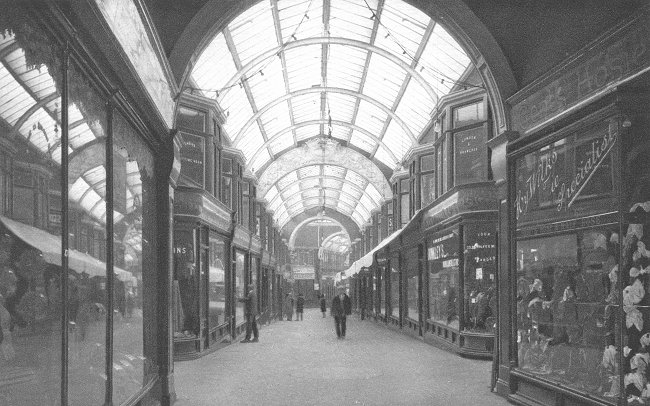
An early view of the arcade.
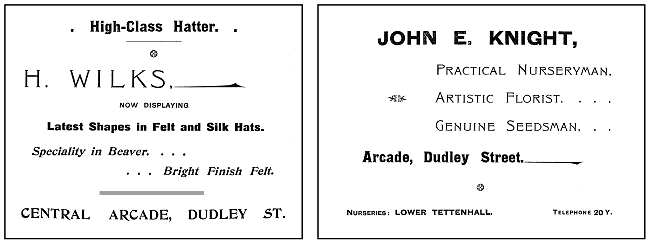
Two adverts from 1903.
|
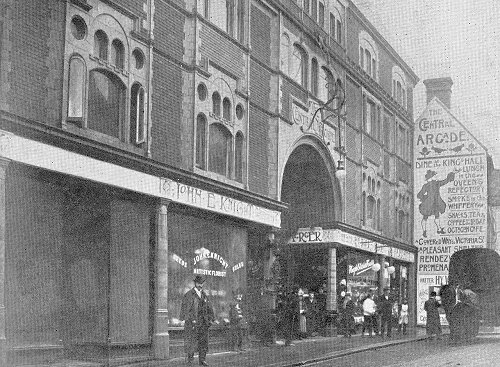
The arcade in 1903. |
The Central Arcade was built by E. J. Charles of
Birmingham and opened in 1902. As well as a wide variety of
shops, it contained the King's Hall Restaurant, a working
men's club, and on Saturdays bands would play music from a
half-circle balcony at the centre of the arcade.
Above the lower end of the arcade was a little workshop run
by Jack Rushton, who owned Radio, Motors and Cycles Limited
in Victoria Street. He employed two girls in the workshop,
who built the radio sets that were sold in his shop. |
In the mid 1950s the main shops were:
Clarkes, ladies' underwear.
Lionel Lawrence Limited, opticians.
Marlow's Drug Stores.
Miller and Sherwood Limited, toy and pram shop.
W. S. Miller Limited, china and glass shop.
H. J. Pountney & Sons, outfitters.
Quality Furnishers Limited.
Quality House Limited, drapers.
Madame Rochelle, hairdressing salon.
P. Rosenshine, drapers.
F. Sunderland, electrical goods.
Suzanne, gowns.
L. N. Vardy, tobacconist and confectioner.
Wilfords, shoe shop.
H. Wilks Limited, menswear.
R. Winter Limited, confectioners.
F. Wright & Son (Carpets) Limited. |
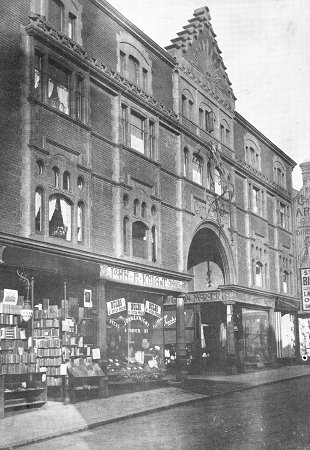
The arcade in about 1910. |
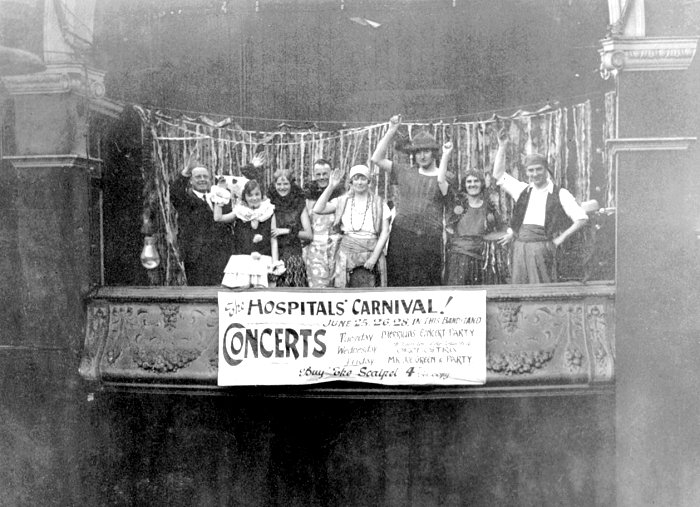
A lovely photograph of a concert
party on the balcony in the arcade, possibly in June
1929, when the days and dates tie-up. They were
fundraising for local hospitals. Courtesy of David
Clare. |
|
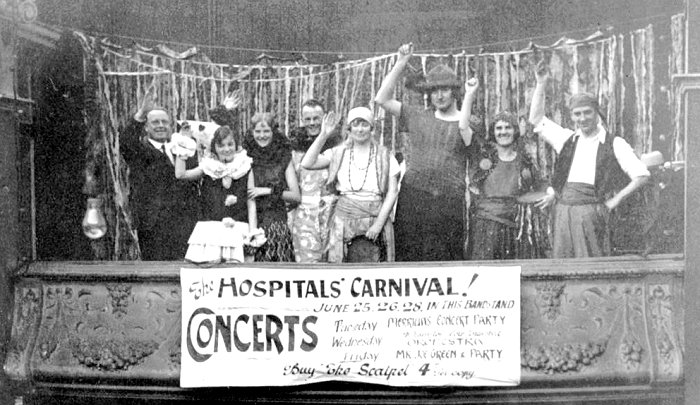
A closer view of the concert
party. Courtesy of David Clare. |
|
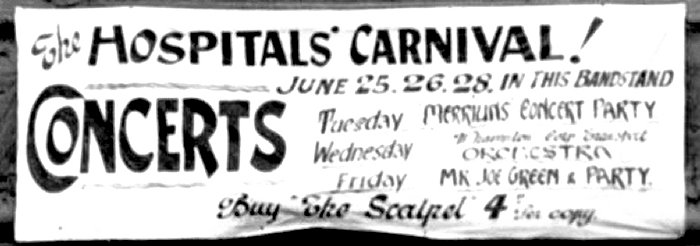
The concert party's banner.
Courtesy of David Clare. |
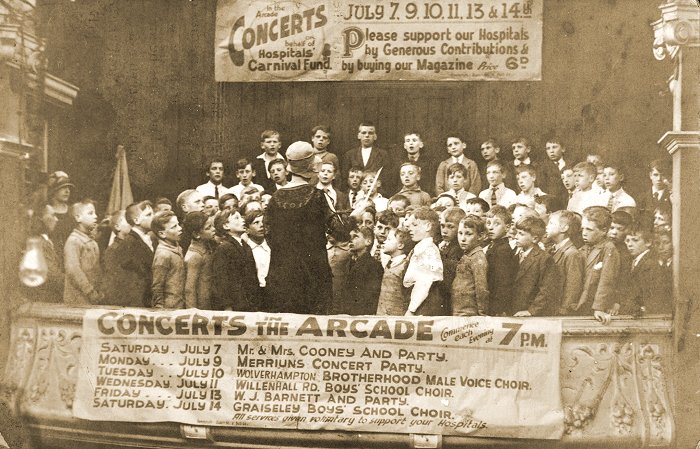
A school choir in action on the
balcony, either from Graiseley Boys' School or
Willenhall Road Boys' School. Probably from 1928 when
the days and dates tie-up. Thanks to David Clare. |
|
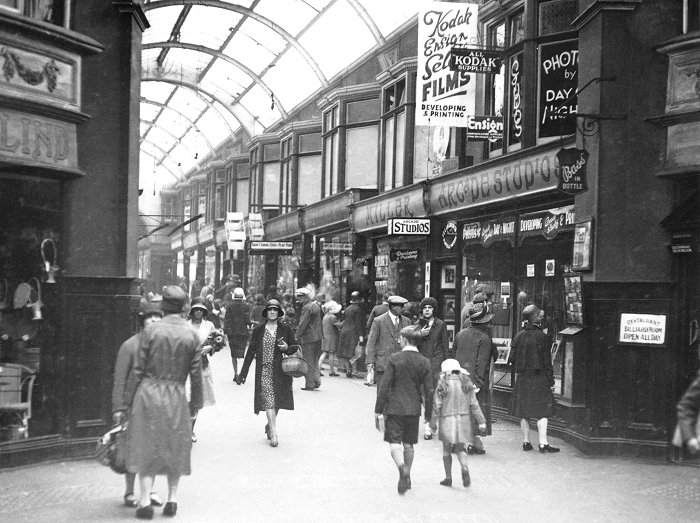
An interesting view of the arcade
on a busy shopping day. Courtesy of David Clare. |
|
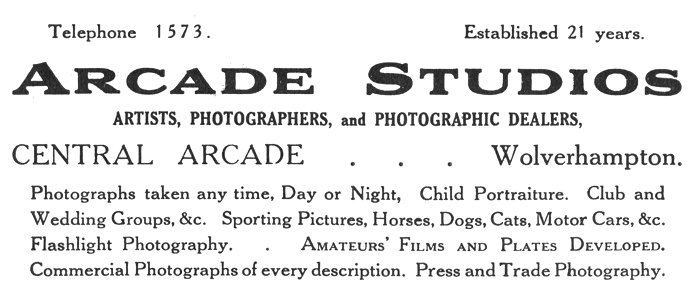
An advert from 1927 for Arcade Studios, which
can be seen in the photograph above. |
|
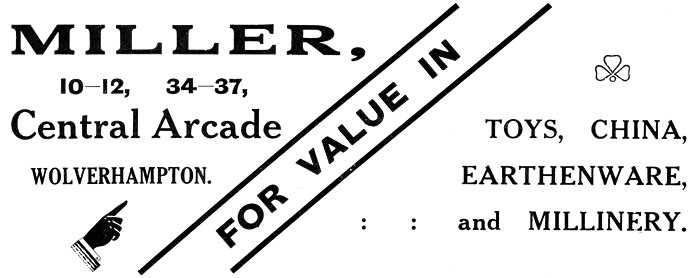
An advert from 1925. |
|
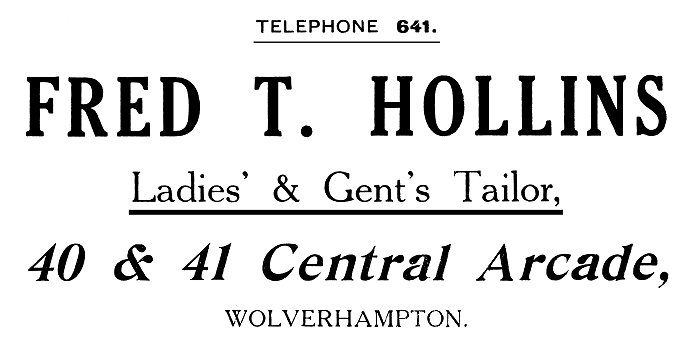
An advert from 1925. |
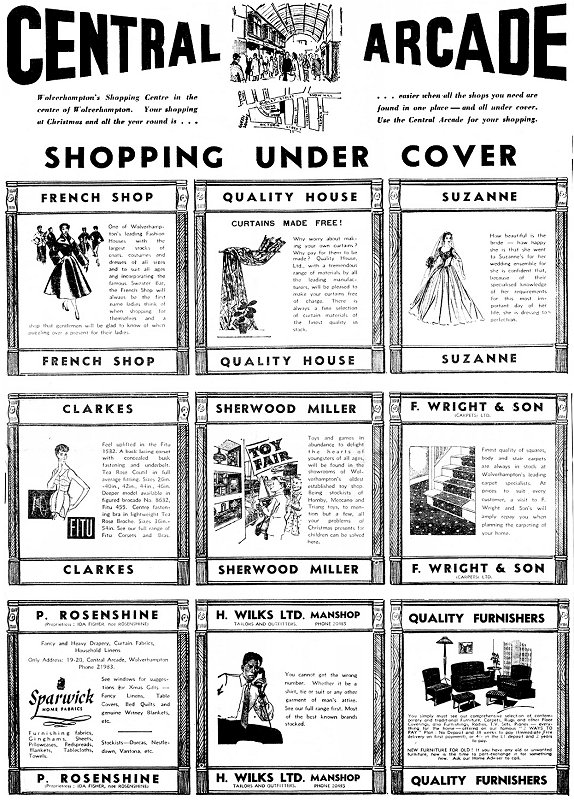
An advert from November 1956. Courtesy of
David Clare.
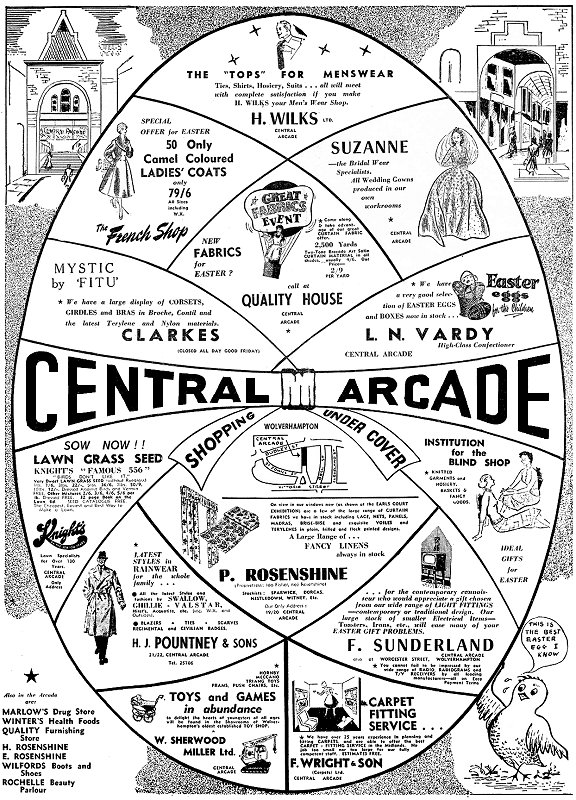
An advert from March 1958. Courtesy of
David Clare.
|
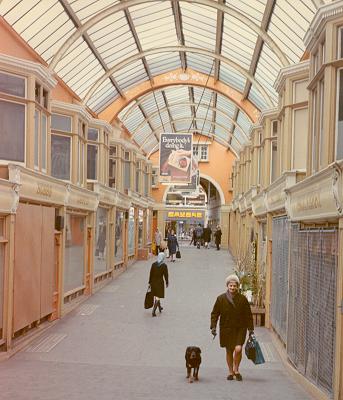
The arcade in the early 1970s. |
In the 1960s the main shops on the north side were:
Clarkes, ladies' underwear.
Quality House Limited, drapers.
French Shop Limited, gowns.
F. Sunderland, lighting, radio and television.
Rosenshine, outfitters and drapers.
H. J. Pountney & Sons, outfitters.
South side:
Institution for the blind, basket makers.
Wilfords, shoes.
Rochelle Hairdressing Salon.
L. N. Vardy, tobacconist and confectioner.
Smart Limited, house furniture.
F. Wright & Son (Carpets) Limited.
Miller and Sherwood Limited, toy and pram shop.
Winter's Stores, health foods.
Marlow's Drug Stores.
|
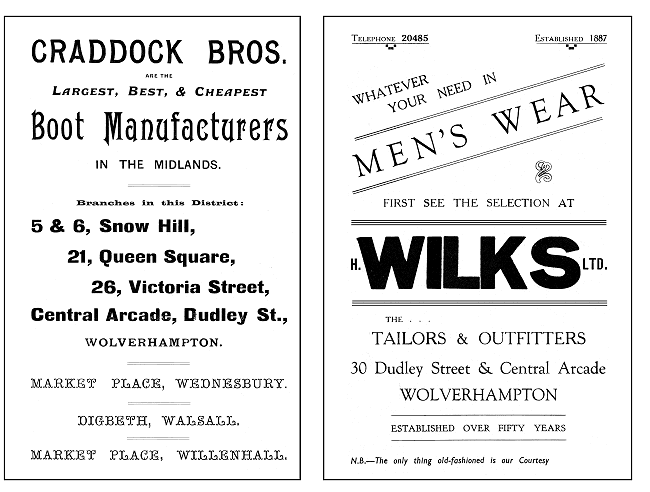
On the left an advert from 1903, on the right
an advert from 1938.
| Some of the traders worked in the arcade for many years,
and their shops became well known. One such shop was run by
Frank Wright, a carpet dealer. In 1932 it became F. Wright &
Son (Carpets) Limited when Jack Wright joined his father in
the business. In the late 1960s the shop moved to Pipers
Row, where it remained until 1982 when it was sold. The
family had another claim to fame in the form of Jack
Wright's son, David John Wright who became a well respected,
and well known Civil Servant.
Jack Wright was born in Kidderminster where he became a
carpet trade apprentice, before joining his father's
business. After his move to Wolverhampton, Jack, his wife
Phyllis, and children David and Kathleen lived in St
Philip's Avenue, and later Holly Grove. David went to
Woodfield Avenue Primary School followed by Wolverhampton
Grammar School. During his school holidays he helped-out in
the shop, selling, delivering, and fitting carpets, as well
as going to Molineux to watch Wolves play. On leaving school
he secured a place at Peterhouse, University of Cambridge,
from where he graduated in history in 1966.
He joined the Foreign Office in 1966 and became Third
Secretary, later Second Secretary, to Tokyo, where he
learned Japanese. He later became Deputy Private Secretary
to the Prince of Wales, and in 1990 was appointed Ambassador
to South Korea. From 1996 to 1999 he was appointed
Ambassador to Japan, and then became Chief Executive of
British Trade International. He retired from the Diplomatic
Service in 2002 and is still as busy as ever today with many
business interests. He was made a Lieutenant of the Royal
Victorian Order, LVO in 1990, a Companion of the Order of St
Michael and St George, CMG in 1992, a Knight Commander of
the Order of St Michael and St George, KCMG in 1996, and
later a GCMG, Knight of the Grand Cross of the Order of St
Michael and St George. |
| The arcade in the 1960s
Courtesy of Eardley Lewis. |
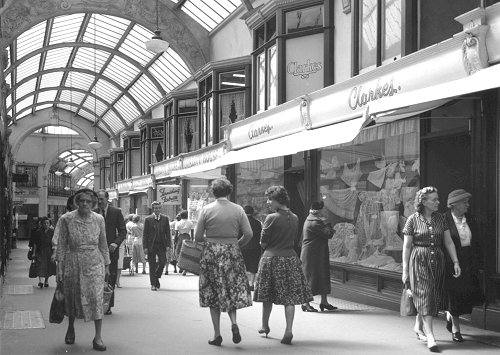 |
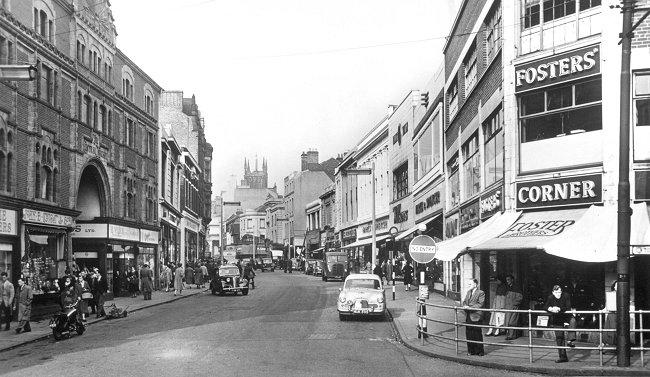
Dudley Street in the 1960s. From an old
postcard.
|
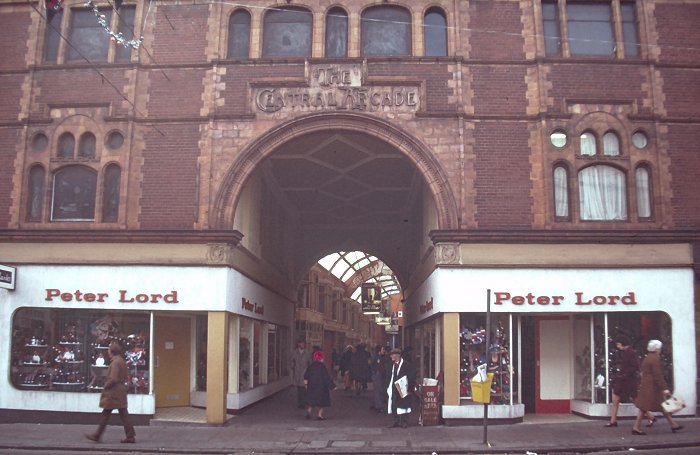
The once familiar arcade entrance.
Courtesy of David Parsons. |
By the mid 1960s some of the shops were looking a little
run-down and might not have been doing that well.
The future however seemed bright. Unlike the Queen's Arcade,
which was hastily demolished to make way for the Mander
Centre, the Central arcade was to be retained as one of the
entrances to the new shopping complex. This was partly the
result of a successful campaign to keep the arcade.
Unfortunately its long-term future was not to be.
The Mander Centre opened on 6th March, 1968, and restoration
work on the arcade began. It was repainted in an orange
colour scheme, and became a busy thoroughfare as people
passed through, on their way to, or from the Mander Centre.
Sadly, shortly after the completion of the work, a
disastrous fire rapidly turned the arcade into a pile of
rubble. The fire, which took place on 20th May, 1974 was so
fierce that little was left, other than the badly damaged
frontage. The rapid destruction may have been caused by a
chimney effect, when air rapidly flowed through the long
corridor, to feed the fire. The remains were declared
unsafe, and quickly demolished. |
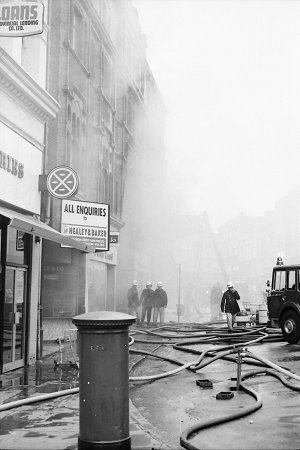 |
|
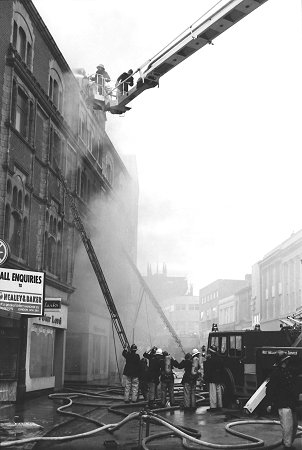 |
|
Firemen,
hard at work in Dudley Street. Courtesy of Steve
Jeffs. |
|
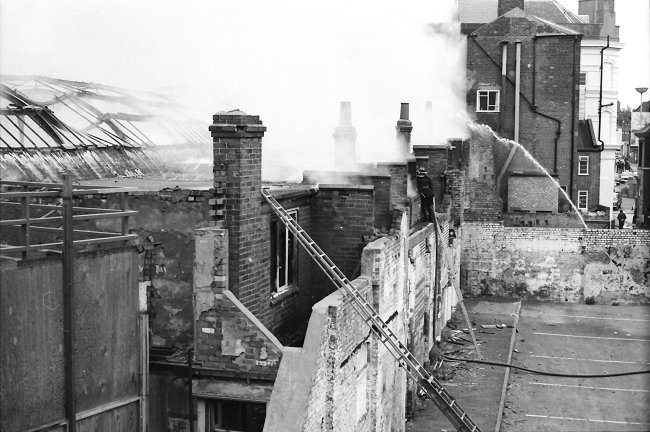
The fire rapidly damages the structure.
Courtesy of Steve Jeffs.
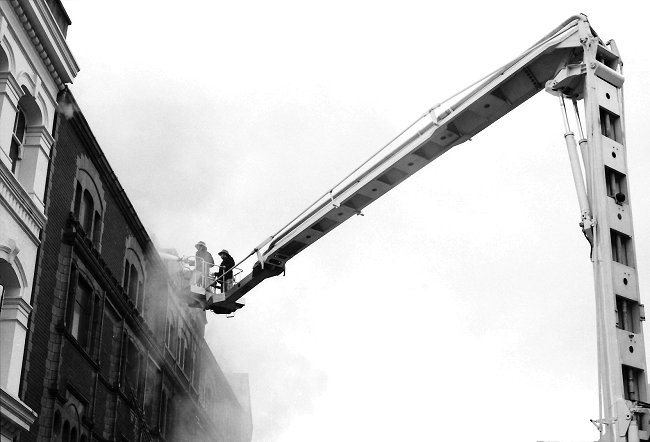
Fighting the fire from above. Courtesy of
Steve Jeffs.
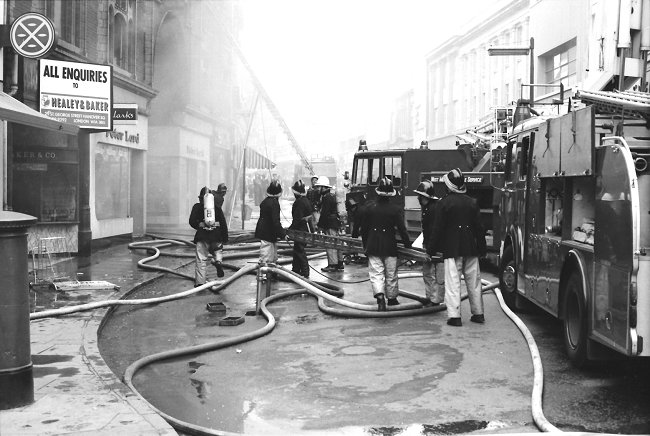
Fire crews in Dudley Street. Courtesy of Steve
Jeffs.
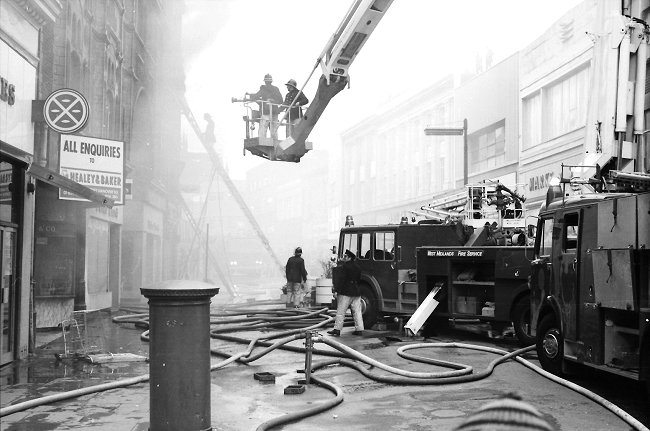
Tackling the blaze. Courtesy of Steve Jeffs.
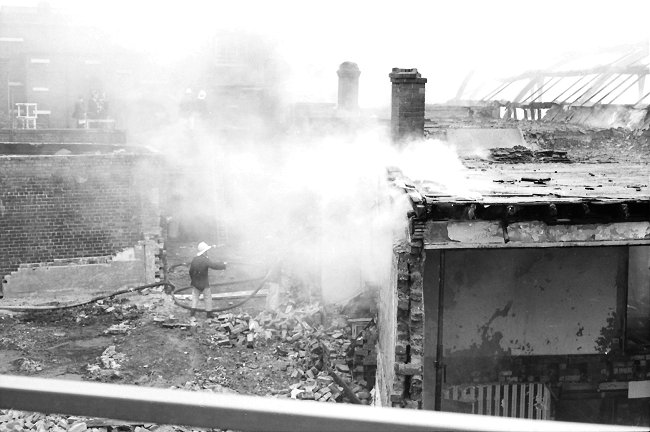
The arcade is quickly turned into rubble.
Courtesy of Steve Jeffs.
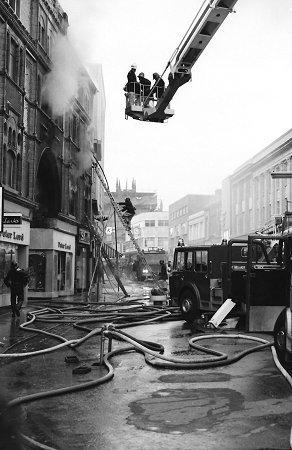 |
|
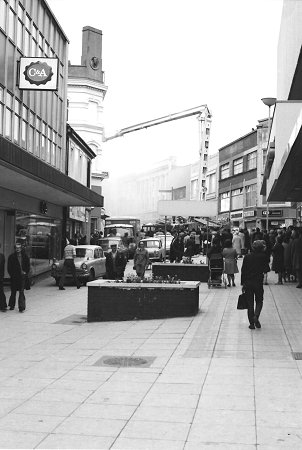 |
|
The fire
comes under control. Courtesy of Steve Jeffs. |
|
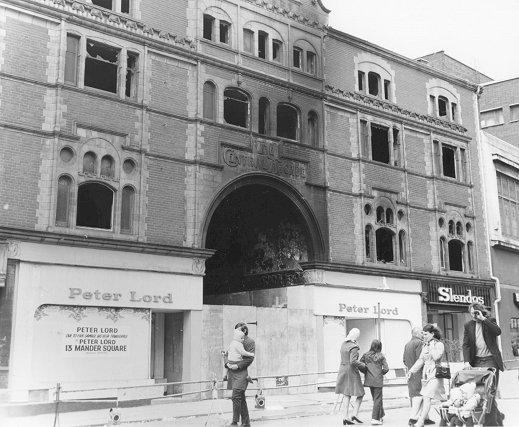
The day after the fire.
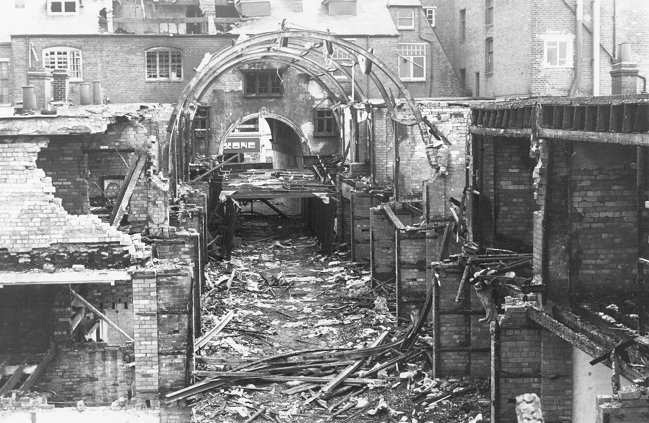
All that remained after the fire.
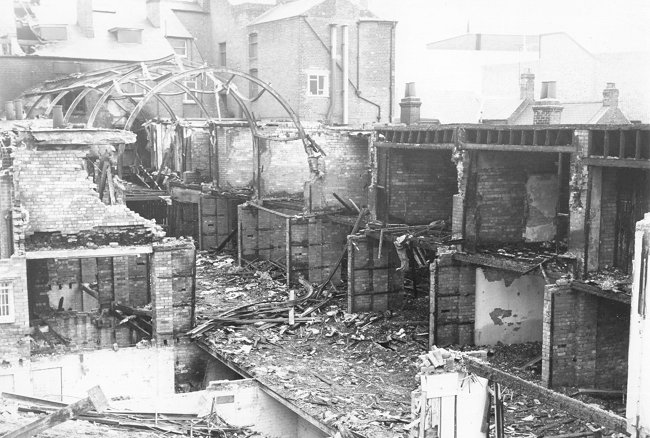
Another view of the ruined arcade.
|
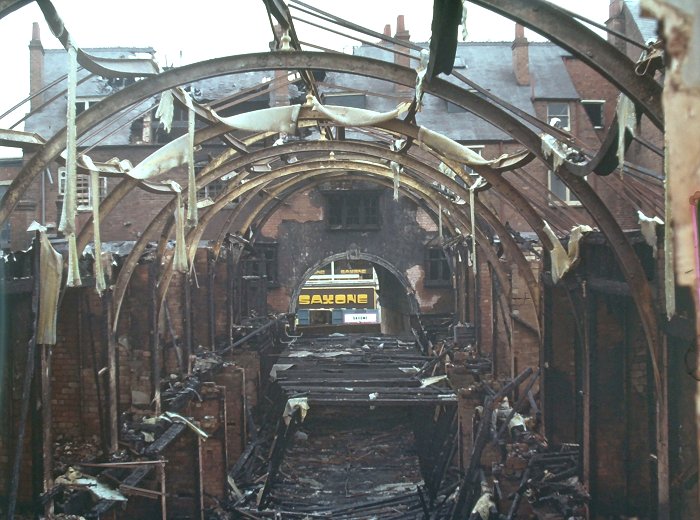
A sad end to a much loved arcade.
Courtesy of David Parsons. |
|
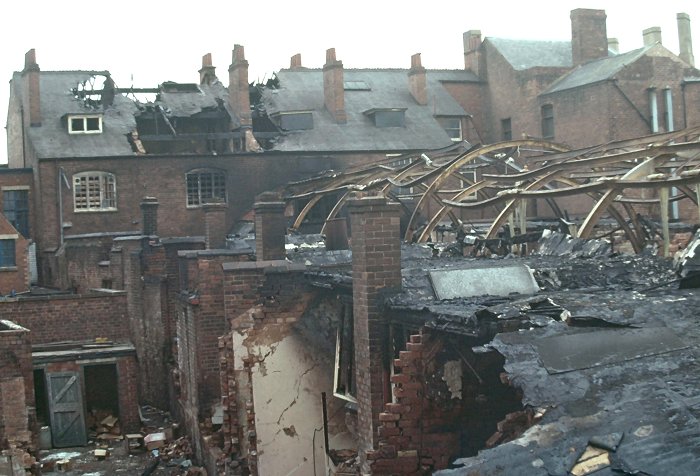
The buildings were almost
completely destroyed. Courtesy of David Parsons. |
|
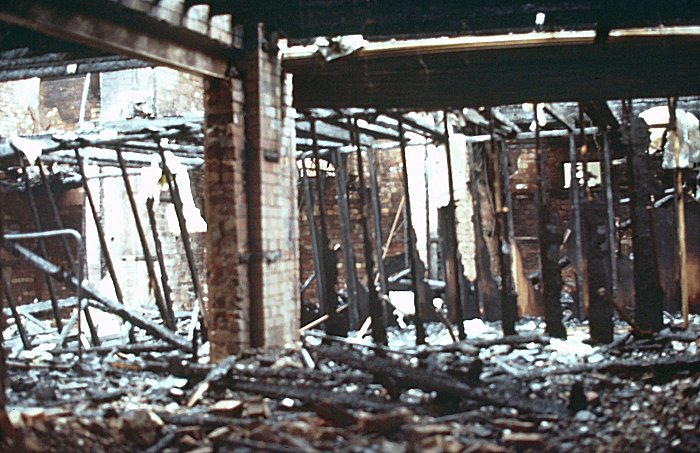
The intense fire left very little
behind. Courtesy of David Parsons. |
|
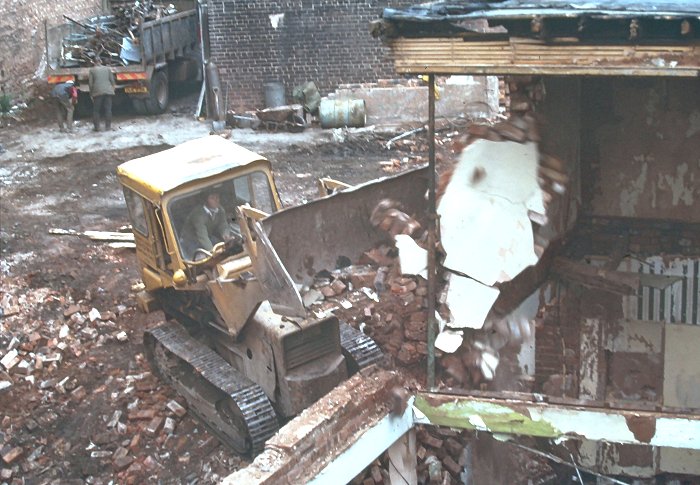
The site was quickly cleared and
tidied-up. Courtesy of David Parsons. |
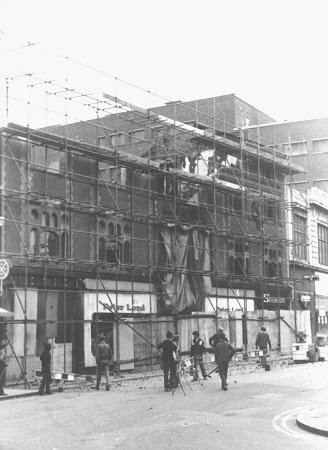 |
|
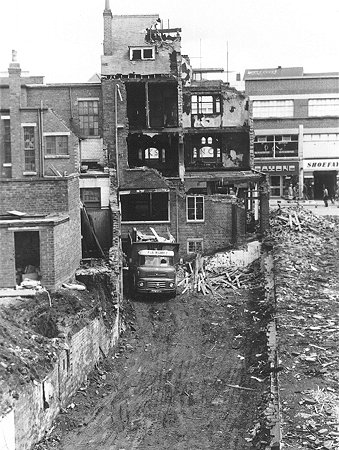 |
|
Scaffolding
is erected, and the site is cleared. Courtesy of
David Clare. |
|
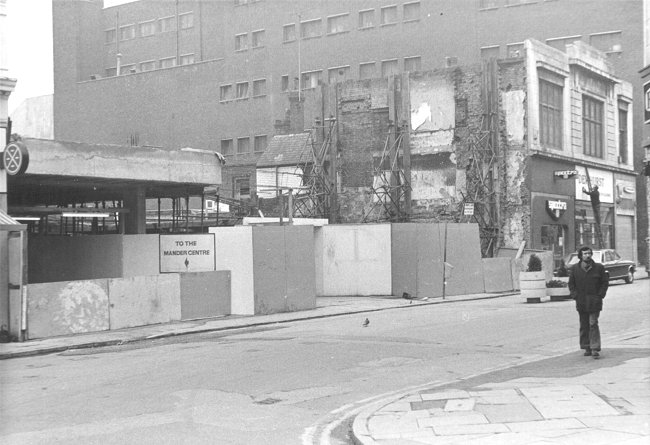
The site after demolition. Courtesy of David
Clare.
At the time there was a lot of speculation about the
cause of the fire. Many people thought that it was a
deliberate act, carried out to allow the building of the
modern arcade, which still stands today. Another
suggestion was that a tramp, who had been sleeping there,
might have lit a fire to keep warm.
Whatever the reason, Wolverhampton lost one of its fine
Victorian structures, its first and last traditional arcade. |
 |
Return to
the
previous page |
|